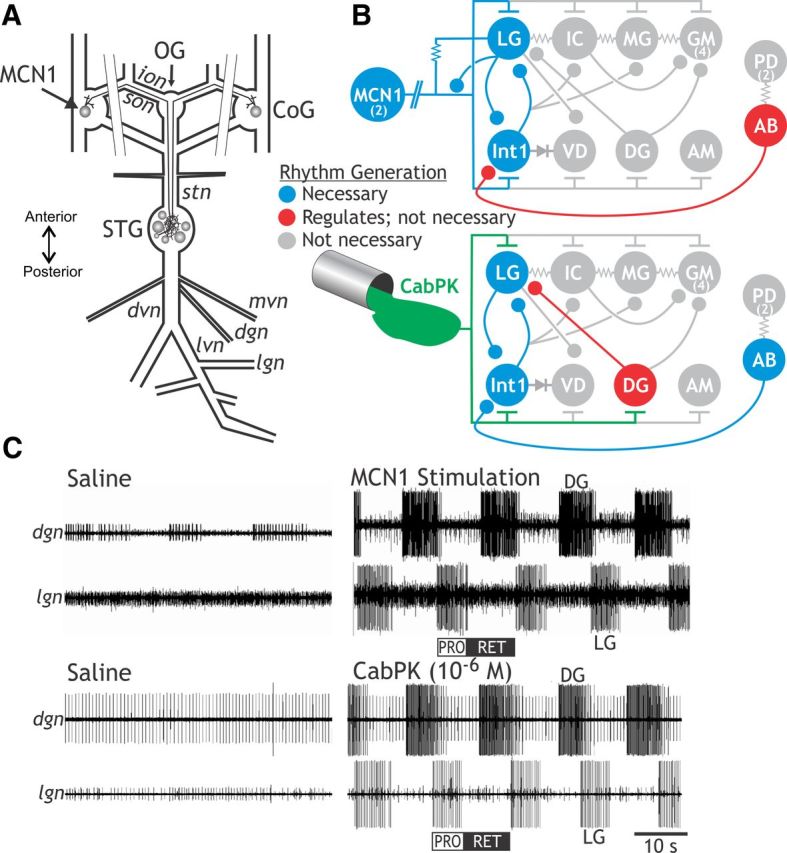Figure 1.

The projection neuron MCN1 and bath-applied CabPK peptide configure different gastric mill circuits but elicit the same gastric mill motor pattern. A, Schematic of the isolated STNS, including its four ganglia [paired CoGs, oesophageal ganglion (OG), STG] plus their connecting nerves and a subset of the peripheral nerves. Paired parallel lines crossing the superior oesophageal nerves (sons) and inferior oesophageal nerves (ions) represent their bisection, which occurred at the start of each experiment to separate the STG from the CoGs. dgn, dorsal gastric nerve; dvn, dorsal ventricular nerve; lgn, lateral gastric nerve; lvn, lateral ventricular nerve; mvn, medial ventricular nerve; stn, stomatogastric nerve. B, Schematic of the gastric mill circuit configured by MCN1 stimulation (top) and CabPK peptide superfusion (bottom). t bars, excitation; filled circles, inhibition; resistors, nonrectifying electrical coupling; diode, rectifying electrical coupling. Parallel lines crossing the MCN1 axon represent additional distance between the MCN1 soma in each CoG and its axon terminals in the STG. Numbers in parentheses indicate the copy number per STNS for each neuron type when it is present as more than one copy. C, MCN1 stimulation and CabPK bath application elicit the same gastric mill motor pattern. These two manipulations were performed in different preparations. From Saideman et al. (2007b). PRO, Protraction; RET, retraction.
